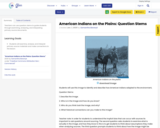
Teachers can use question stems to guide students through examining, analyzing, and interpreting primary source documents.
- Subject:
- American History
- History/Social Sciences
- Material Type:
- Assessment
- Primary Source
- Date Added:
- 11/29/2019

Teachers can use question stems to guide students through examining, analyzing, and interpreting primary source documents.
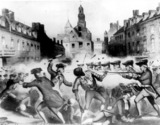
This primary source activity can be used after teaching students about the different groups during the Revolutionary Period such as patriots, loyalists, and neutrals. The activity is on a Google Worksheet and includes links to primary sources online and questions about those sources. The primary sources include writings by Cato, an American farmer, and Reverand Inglis. You can add or change questions if you so wish. The settings can be changed as well by clicking on the settings icon at the top right corner of the screen.
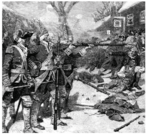
This inquiry focuses on the causes of the American Revolution in light of feelings of injustice among social classes. Students typically learn about the experiences of people during the American Revolution in simple categories such as loyalist and patriots. In reality, there were varied experiences that reflect social class, gender, race, and ethnicity. In this inquiry, students will learn about a variety of these experiences and how they may have impacted the events of the Revolution.

presents a travel itinerary of 58 historic places across Arizona, Colorado, and New Mexico. It includes forts built to protect mail routes and settlers, missions and churches, prehistoric cliff dwellings, trading posts, petroglyphs (from the petrified forest), pit house villages, and Indian villages home to the Anasazi, Sinagua, Zuni, and other Native American tribes.

In this learning experience, the students will complete a primary source inquiry into the impacts of Reconstruction on Black experiences in Virginia and the South. The students will use the Claim-Evidence-Reasoning structure to defend one of two claims.Students will analyze sources that depict/detail Black experiences and perspectives before, during, and after the Reconstruction. This learning experience will be most effective after students have been introduced to the what and when of Reconstruction.
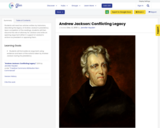
Students will read two articles written by historians, describing the legacy of Andrew Jackson's presidency. Upon completion of the readings, students will then assume the role of attorney for Jackson and write an opening argument either in support of Jackson's actions as president or opposing them.
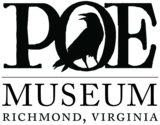
This guided reading of Edgar Allan Poe’s “Annabel Lee” (1849) focuses on developing student understanding of imagery and other figurative language, strengthening reading comprehension, and strengthening expository and persuasive writing skills.

This inquiry focuses on the question of whether Antebellum technology made life better overall for people and how certain inventions impacted groups of people differently. Four innovations—the cotton gin, mechanical reaper, steamboat, and steam locomotive—were particularly impactful in the 19th century. These inventions came about quickly as part of the First Industrial Revolution, which was marked by the movement from hand production to machine work. Many scholars view James Hargreaves’ 1760s invention of yarn-spinning machine, the spinning jenny, as the start of the Industrial Revolution. From that point forward, new technologies came along quickly. Beginning in in the 1790s, four inventions, the cotton gin, the mechanical reaper, the steamboat, and the steam locomotive, provided the impetus for rapid economic development for some, while at the same time increasing inequality and suffering for many.

Help students learn about archaeological methods and how archaeological interpretations are made. It is organized around questions that include: What is archeology? What do archaeologists do? How do archaeologists determine how old things are?
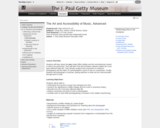
Students will learn about the jazz singer Billie Holiday and the sociohistorical context in which she performed. They will learn how discriminatory statutes (called Jim Crow laws) affected daily life. They will also analyze how movement is created in photographs and the effect of a photographer's point of view on composition. Finally, students will photograph a musician, paying attention to what can be communicated through point of view.

This is an activity to help students understand assimilation attempts. The students watch a video clip, discuss assimilation, and create a poster advocating for or against the assimilation of American Indians during the time period of Westward Expansion.
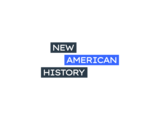
At Home With Ursula Le Guin; Her novels featured dragons and wizards, but they were also deeply grounded in indigenous American ways of thought.
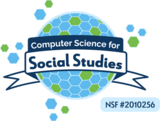
This cipher was invented for the Hebrew alphabet, but it can work with any alphabet. Many people believe it was used in the Bible and is older than Hieroglyphics! It was later adopted by other cultures, such as the Greeks and Romans, and used to encode messages in their respective languages. This lesson leads students the basics of cryptography.

This guided reading of Edgar Allan Poe’s “The Bells” (1848) focuses on developing student understanding of imagery and other figurative language, strengthening reading comprehension, and strengthening expository and persuasive writing skills.
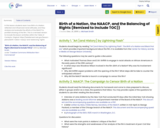
In this lesson students learn how Birth of a Nation reflected and influenced racial attitudes, and they analyze and evaluate the efforts of the NAACP to prohibit showing of the film.
This is a remixed version to include the lesson activities within the Table of Contents.
Original: https://edsitement.neh.gov/lesson-plans/birth-nation-naacp-and-balancing-rights
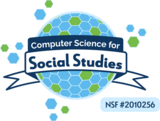
There were many black women who worked as code breakers at Arlington Hall during World War II, including Elsie Scott, Sue Bailey Thurman, and Genevieve Collins. These women faced significant challenges and discrimination due to their race and gender, but they made significant contributions to the war effort through their work as code breakers.

Students will use primary sources to detect propaganda.
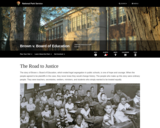
features Monroe Elementary, the school attended in 1950 by third grader Linda Brown. Because she was black, Brown was barred from attending a white school much closer to her home. The cases brought by father and others led to the Supreme Court's unanimous decision in 1954 that racial segregation in public schools was unconstitutional.
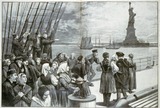
Students will answer the question: Did the American Dream come true for immigrants who came to New York? Students will analyze primary and secondary sources, synthesize new information, and answer the compelling question using evidence from the lesson. Students will use interactive simulations, videos, secondary sources, and primary sources as they engage in supporting questions throughout the lesson. By the end of the lesson, students will be able to explain why immigrants chose to emigrate to America, describe the process at Ellis Island, describe life in New York tenements, and explain how immigrants helped shape New York culture.This lesson is adapted from the Immigration Inquiry designed by C3Teachers.org: http://www.c3teachers.org/inquiries/immigration/
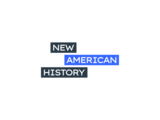
While the heyday of the canals lasted only a few decades, they transformed the American economy by connecting the areas west of the Appalachian Mountains to eastern population centers and Atlantic ports. Concentrated largely north of the Mason-Dixon line, they shaped American regionalism too by linking the northeast and northwest together into a region that increasingly came to see itself as the "North."